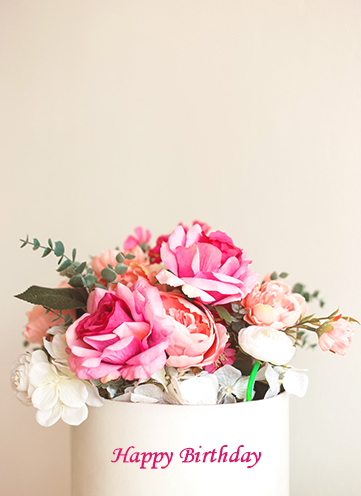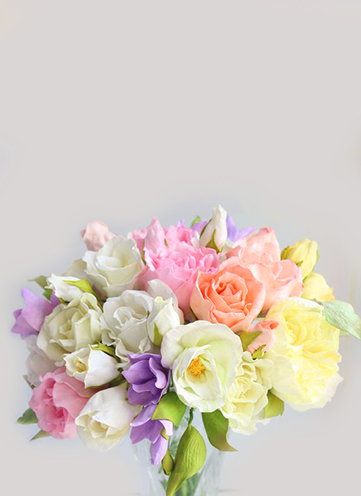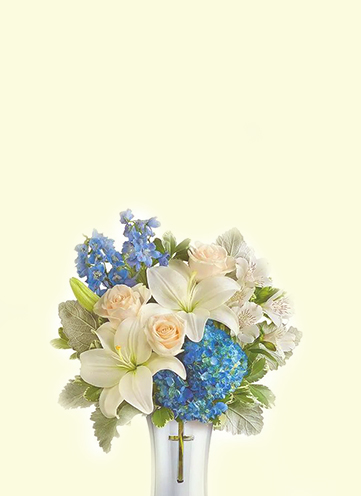Creating a Hydrangea Haven: Care Tips and Tricks
Posted on 09/06/2025
Creating a Hydrangea Haven: Care Tips and Tricks
If you're dreaming of vibrant blooms gracing your yard or garden, hydrangeas are an excellent choice. These lush, eye-catching shrubs are prized for their massive, showy flowers and remarkable versatility. In this comprehensive guide, discover everything you need to know about creating a hydrangea haven--with expert hydrangea care tips and tricks--for healthy plants that burst with color season after season.
Understanding Hydrangeas: An Introduction
Hydrangeas (Hydrangea species) are among the most beloved flowering shrubs, widely treasured by gardeners around the globe. Renowned for their ability to produce opulent clusters of flowers in hues of blue, pink, white, purple, and green, hydrangeas can transform any landscape with their charm.
There are several types of hydrangeas, but the most popular include:
- Bigleaf Hydrangea (Hydrangea macrophylla): Known for their large, color-changing blooms.
- PeeGee Hydrangea (Hydrangea paniculata): Admired for their cone-shaped flowers and hardiness.
- Oakleaf Hydrangea (Hydrangea quercifolia): Notable for their oak-like foliage and grace in shade.
- Smooth Hydrangea (Hydrangea arborescens): Loved for their reliable, fluffy white blossoms.
- Climbing Hydrangea (Hydrangea anomala petiolaris): Perfect for fences and walls, with beautiful white lacecap flowers.

Site Selection: Where Hydrangeas Thrive
Choosing the ideal spot is vital for growing hydrangeas successfully. Consider these essentials:
- Light Requirements: Most hydrangeas prefer morning sun and afternoon shade. Too much direct sunlight, especially in hotter climates, can scorch their leaves, while too little leads to fewer blooms.
- Soil: Hydrangeas need moist, well-draining soil rich in organic matter. They don't tolerate standing water or overly dry conditions, both of which can harm their roots and blooms.
- Protection: Plant hydrangeas in a spot shielded from strong winds, which can damage the large flower heads.
Tip: Test your garden soil's pH. The color of many hydrangea varieties' blooms depends on the soil's acidity or alkalinity (more on that below!).
Planting Hydrangeas: Setting The Foundation
Proper planting is key to creating a hydrangea haven. Follow these steps for success:
- Choose the right time: Plant hydrangeas in spring or fall when temperatures are mild.
- Dig a generous hole: Ensure the hole is at least twice as wide as the root ball and of similar depth.
- Add amendments: If your soil is heavy clay or very sandy, mix in compost to improve structure and nutrients.
- Space accordingly: Give each plant plenty of room for air circulation--bigleaf hydrangeas need about 3-6 feet between them, while panicle types require more.
- Backfill and water: Fill the hole gently and water well to remove air pockets and help roots settle.
Always keep the crown of the plant (where the stems meet the roots) level with the soil surface to prevent rot.
Watering Hydrangeas: Moisture Management
Consistent watering is the cornerstone of robust hydrangea care. These shrubs require plenty of moisture, especially when establishing roots and during the peak heat of summer.
- Deep soakings are essential--shallow, frequent watering only moistens the surface and can stress the plant.
- Target the base of the plant to avoid wetting the leaves, which can invite disease.
- Mulch generously to retain soil moisture and regulate temperature; a 2-3" layer of organic mulch helps suppress weeds while keeping the ground cool and damp.
Caution: While hydrangeas love water, avoid overwatering that can cause root rot. Well-drained soil is just as crucial as moisture!
Fertilizing Hydrangeas: Feeding for Fabulous Blooms
For spectacular flowers and vigorous growth, hydrangeas benefit from periodic feeding. Here's how to get it right:
- When to fertilize: Apply a balanced granular or slow-release fertilizer in early spring as new growth appears. A second, lighter feeding in late spring can boost blooms, but avoid late summer applications that encourage tender growth prone to winter damage.
- What to use: Choose a fertilizer with balanced or slightly lower nitrogen content (like 10-10-10 or 10-20-10). Too much nitrogen leads to lush leaves but fewer or smaller flower clusters.
- Application tips: Scatter fertilizer evenly under the dripline and water thoroughly. Never apply fertilizer directly on the stems or leaves.
Organic options like compost or well-rotted manure can also enrich your soil and keep plants thriving.
Pruning Hydrangeas: When and How
Proper pruning is essential for both flower production and plant health--yet not all hydrangeas are pruned in the same way.
Know Your Hydrangea Type
- Bigleaf and Oakleaf Hydrangeas: These varieties bloom on old wood (last year's stems). Prune right after blooming in summer by removing spent flowers and dead or crossing stems, but avoid cutting back in late fall, winter, or spring, or you'll lose next year's buds.
- Panicle and Smooth Hydrangeas: These types bloom on new wood (current season's growth). Prune in late winter or early spring before new growth emerges. Cutting back by up to one-third encourages bigger, fuller blooms.
General pruning tips:
- Always use clean, sharp tools.
- Remove dead, old, or weak stems at ground level to invigorate the shrub.
- Thin out the center of the plant to improve air flow and sunlight.
Changing Hydrangea Colors: The Science of Soil pH
Did you know that with a little effort, you can change the color of your hydrangea blooms? For certain types--especially Bigleaf hydrangeas--the flower color depends on your soil's pH and available aluminum.
- Acidic soil (pH less than 6): Leads to blue or lavender-blue flowers.
- Neutral to alkaline soil (pH above 6): Results in pink or even red blooms.
How to Adjust Your Hydrangea's Color
- To turn flowers blue: Lower your soil's pH by adding garden sulfur or aluminum sulfate and mulch with pine needles or oak leaves.
- To produce pink blooms: Raise pH by adding lime (such as dolomitic lime) to the soil, working it in gently around the root zone.
Tip: Always adjust soil slowly, and test pH periodically. Not all hydrangea species can change color--florist, panicle, and oakleaf hydrangeas are exceptions.
Seasonal Care Calendar for Hydrangeas
To keep your hydrangea haven healthy and beautiful all year long, stick to this basic seasonal care routine:
- Spring: Remove winter mulch, fertilize, check for winter damage, and prune if necessary (based on hydrangea type).
- Summer: Water deeply during dry spells, deadhead old blooms, keep beds weeded and mulched.
- Fall: Stop fertilizing, apply a new layer of mulch for insulation, and monitor soil moisture as temperatures cool.
- Winter: In colder climates, wrap or cover plants with burlap if exposed to harsh winds; avoid heavy pruning.
Dealing with Common Hydrangea Problems and Pests
Even in a well-tended hydrangea garden, challenges can arise. Here's how to troubleshoot the most common issues:
- Wilting Leaves: Typically a sign of underwatering or, less commonly, root rot from too much moisture. Check soil and adjust watering accordingly.
- Brown Leaf Edges: Can be caused by drought, excess fertilizer, or hot afternoon sun. Move to a shadier spot or increase mulching and watering.
- Pests: Aphids, spider mites, and scale are occasional problems. Strong sprays of water or insecticidal soap often control small infestations.
- Leaf Spots and Powdery Mildew: Promote airflow with careful pruning, water at the base, and avoid overhead watering. Remove affected leaves and dispose of them in the trash.
Tip: Practice good garden hygiene--regularly remove debris, inspect plants, and maintain mulch to prevent both pests and disease.
Hydrangeas in Containers: Growing Tips
Don't have garden space? You can still enjoy vibrant hydrangeas in containers! Here's how:
- Choose a large, sturdy container with drainage holes to accommodate your shrub's root system.
- Use rich potting mix with added organic matter for nutrition and drainage.
- Water regularly--potted plants dry out faster than those in the ground.
- Feed with a balanced liquid fertilizer once a month during the growing season.
- Move pots to shelter them from freezing temps in winter and from scorching sun in summer.
Companion Planting: What to Pair with Hydrangeas
Part of crafting a true hydrangea haven is selecting the right neighbors. Pair your hydrangeas with plants that complement their growth habit, leaf shape, and flower color for an impressive layered effect.
- Shade-loving perennials like hostas, ferns, astilbes, and heucheras offer beautiful foliage contrast and thrive in the same conditions.
- Bulbs such as spring-blooming daffodils and summer lilies provide waves of color before and after hydrangea blooms peak.
- Low shrubs like azaleas or boxwoods frame hydrangeas and structure your garden design.
- Groundcovers including lamium or creeping Jenny can help retain moisture and keep roots cool.
Tip: Aim for a combination that provides interest throughout the growing season, not just when hydrangeas are in full flower.
Hydrangea Care Myths and Mistakes to Avoid
Even seasoned gardeners can fall for these common hydrangea misconceptions. Learn what to avoid to keep your hydrangea garden flourishing:
- Myth: "All hydrangeas change color with soil pH." Truth: Only some can! Bigleaf and mountain hydrangeas--never oakleaf or panicle types.
- Myth: "Hydrangeas need full sun to bloom." Truth: Most do best with partial sun; too much sun causes wilting or leaf burn.
- Mistake: Pruning at the wrong time can remove the next season's flower buds (especially with old wood bloomers).
- Mistake: Over-fertilizing promotes foliage growth at the expense of flowers--always follow application guidelines.

Designing Your Hydrangea Haven: Creative Ideas
Ready to turn your space into a show-stopping hydrangea paradise? Here are inspiring ways to showcase these stunning shrubs:
- Create a focal point with dramatic specimen bushes near your entrance or patio.
- Plant hydrangeas as a border hedge for privacy with year-round flower displays.
- Mix varieties in large garden beds for a quilt-like blend of sizes, shapes, and colors.
- Accentuate walkways or fences with climbing hydrangeas or tall panicle types for vertical impact.
Don't overlook dried hydrangeas--they make beautiful indoor arrangements and can last all winter long!
Summary: Enjoying Your Hydrangea Retreat
Creating a lush, vibrant hydrangea haven requires the right mix of planting, watering, pruning, feeding, and design. By understanding your hydrangea's needs and providing a nurturing environment, you will enjoy an abundance of spectacular blooms.
Whether you're a new gardener or an experienced landscaping enthusiast, these comprehensive hydrangea care tips and tricks will help you grow hydrangeas that are the envy of your neighborhood. Happy gardening!
Latest Posts
Plant These 12 Flowers for a Durable Floral Arrangement
How to Keep Your Poinsettias Fresh for Holidays
Unearthing Tulip Treasures: 7 Surprising Facts to Discover
3 Creative Ideas to Maintain Flower Freshness
Discover 8 Astonishing Things You Never Knew About Sunflowers





